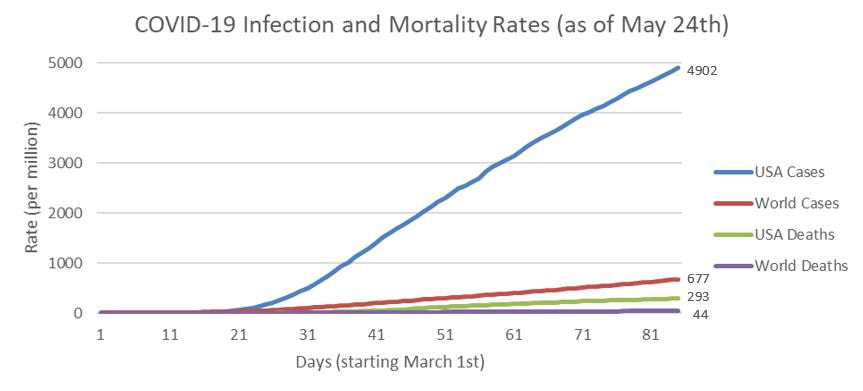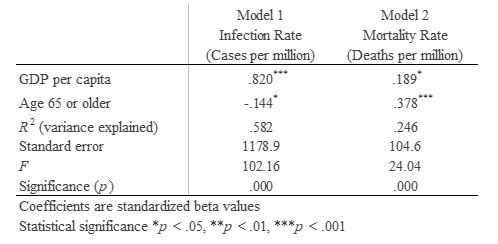|
Why in the world (literally) is the U.S. leading the pack in the number of COVID-19 cases and deaths? While the media continues to focus on the speed and severity of different countries’ lockdown measures, I suspect there is something more basic, more demographic, at work. Fortunately, we have a growing number of quality data sets on the pandemic and I finally had a chance to run some statistics this weekend. The two variables I was interested in were the size of the economy and the age of the population. The U.S. is an economic powerhouse and a strong economy suggests a high level of social engagement through business, recreation, travel, etc. To measure the economy, I used Gross Domestic Product (GDP) per capita. The U.S. is also an older country in terms of the average age of its population. This may be related to the economy, as a higher GDP per capita suggests better living conditions, healthcare, and other factors related to living longer. To measure age, I used the percentage of the population aged 65 or older, which is where we find the majority of deaths from COVID-19. I pulled the data on May 24th for 153 countries (with at least 100 COVID-19 cases each) from the Our World in Data COVID-19 data set which is available at https://github.com/owid/covid-19-data/tree/master/public/data. This data set integrates multiple sources including the European Centre for Disease Prevention and Control, World Bank, UN, and national government reports. A couple of regression models were all it took to confirm my suspicions, as shown by the following table. Looking first at the infection rate, both the economy and age were significantly related to the number of reported COVID-19 cases per million, with GDP per capita having a very strong effect (.820). The age variable was actually negatively related to the infection rate, suggesting that older individuals were less involved in the propagation of the contagion. Looking at the mortality rate, both variables were positively related to the number of reported COVID-19 deaths per million. Here, age 65 or older had the stronger effect (.378). The statistical significance of both models was very high (p < .001). This quick study is just one of many that are sure to come, addressing other relevant factors such as testing, asymptomatic cases, urban density, lockdown policies, hospital beds, PPE availability, gender, etc. However, the study clearly shows that economic activity is tied to the infection rate, and the vulnerability of the population is tied to the mortality rate. Not too surprising when you think about it.
Comments are closed.
|


